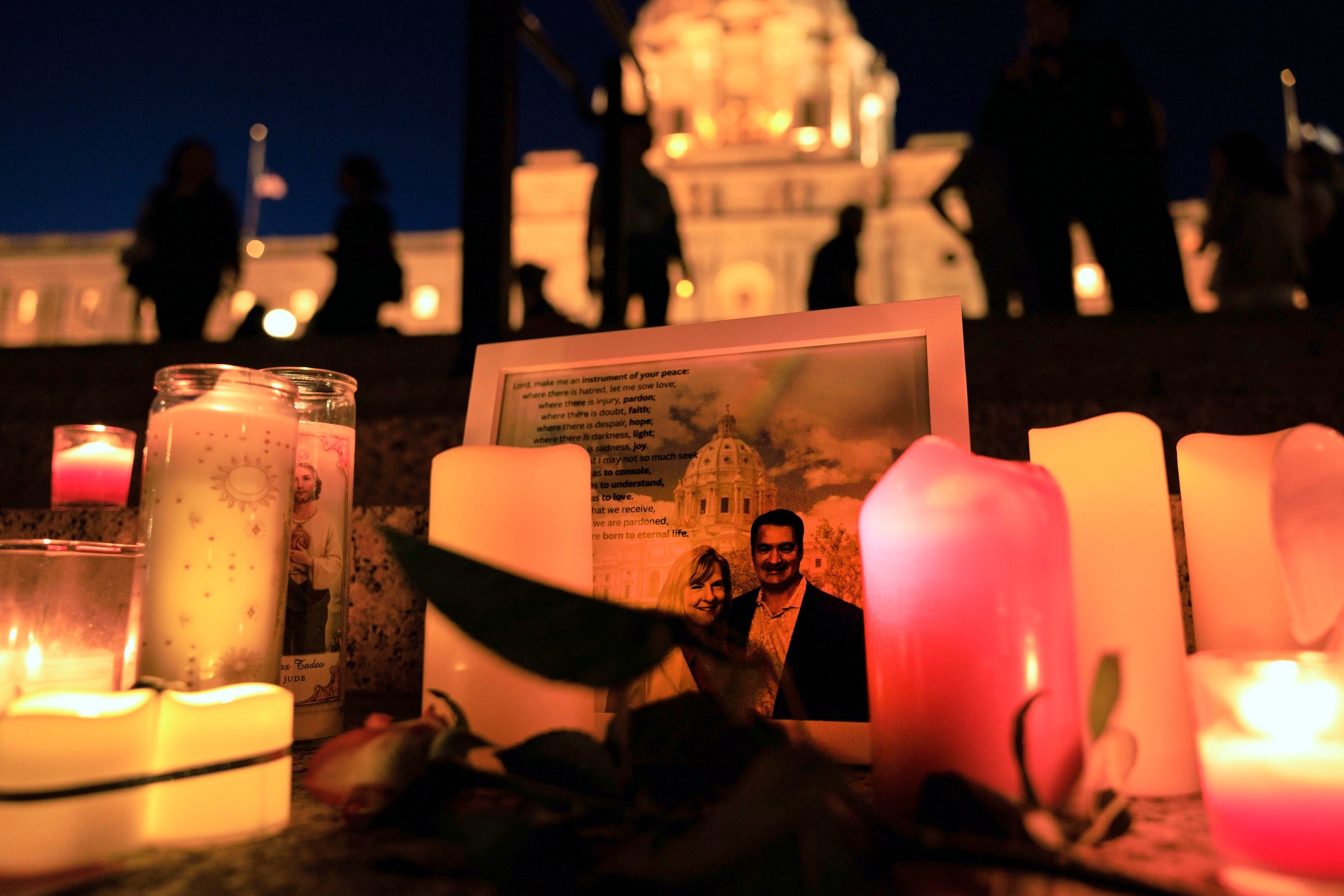What To Know Today
NEW from THE TRACE: It’s hard to talk about gun violence with young people. This artist uses murals to start the conversation. Warren Montoya, 39, grew up on the Tamaya Indian Reservation in New Mexico. As a young man, he was beset by identity crises, a sense of aimlessness, and tragic experiences with gun violence. In a new profile, Ann Givens spoke with Montoya about how his background informs his professional art and how he uses painting to help members of a younger generation process their own individual and social traumas. “Any one of the things people had been through could drive someone crazy,” Montoya says about working with a group of Albuquerque high school students as part of an anti-violence art campaign. “But we were all carrying it — dragging our 500 pound bags of grief.” You can read that story — and see the beautiful murals he’s helped create — here.
ICYMI: Michigan is a prime example of how gerrymandering can doom gun reform. After a 15-year-old student at Oxford High School in Michigan opened fire on his classmates last month with a handgun his parents had bought for him, killing four young people and injuring seven, state Democrats are seeking to enact tougher gun laws. Resistance is certain. Michigan Republicans — who owe their grip on power in part to heavily gerrymandered voting maps — have thwarted proposals to curb gun violence for a decade. The gun lobby often gets credit for such defeats. But Michigan illustrates how these outcomes can also hinge on structures that favor minority party control and disadvantage Democrats, who tend to support stricter gun measures. Will Van Sant has that story.
$5B in federal funding for community-led violence prevention looks to be off the table with Joe Manchin’s “no” vote. As we’ve covered, tucked into President Joe Biden’s $2 trillion spending, climate, and public health bill was the largest ever federal commitment for community-focused violence interventions. And for months, it looked like however much the bill’s final price tag got pared down to secure the vote of Democratic moderates like Manchin, the final version would still retain the $5 billion in violence prevention. But with absolute Democratic unity essential for the budget bill to overcome unanimous Republican opposition, the West Virginia Democrat’s announcement on Sunday that he would oppose the Build Back Better Act all but dooms the bill and with it the violence prevention money — unless it is broken off and passed as a standalone bill.
Indianapolis invests a historic $45 million into its own community-led violence prevention. It is one of at least a dozen U.S. cities that have broken annual homicide records this year. And like many other cities facing elevated violence, Indianapolis has used federal stimulus dollars on community-focused violence interventions. As The New York Times reports, a big part of the new funding in Indianapolis is expected to go to grassroots hospital-based intervention programs, in which community outreach workers connect with violent crime victims while they’re still in the hospital and mentor them post-discharge. In Indianapolis and elsewhere, the novelty is not that community-violence prevention programs are operating for the first time, but that cities are providing them sustained funding — in many cities for the first time. Related from The Trace: We wrote about hospital-based intervention, and the growing push to fund it using Medicaid.
The Ohio Senate passed a permitless carry bill. It would make it possible for people to carry concealed guns without getting licensed or trained. The state House passed a similar bill last month. But Republican Governor Mike DeWine has not said whether he will sign it. Chip Brownlee previously reported on the slew of GOP-led states that have passed permitless carry this year.
Gun deaths surpassed 45,000 last year. That’s an all-time high, according to provisional CDC mortality statistics released last week. The rise was driven primarily by homicides, which increased 35 percent from 2019 to 2020, an analysis by the Educational Fund to Stop Gun Violence found. It’s important to note that the homicide rate still remains considerably lower than the historic highs of the 1990s.
Data Point
120 — the number of Congressional Democrats, 19 in the Senate and 101 in the House, who are asking Education Secretary Miguel Cardona to issue guidance on safe gun storage for public schools in the wake of the Oxford, Michigan, school shooting. [Congressional letter]

